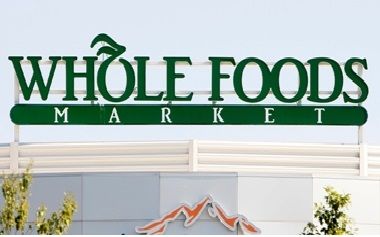Amazon’s shock decision to buy upscale grocery chain Whole Foods delivered another dose of pain to US retail, which was already one of the most problematic sectors of the year so far.
While Whole Foods bonds bounced on news of the US$13.7bn takeover by one of the most famous companies in the world, most of the rest of retail took a pasting in bonds and equities alike.
Amazon’s peer Walmart saw its share price down more than 6% within an hour of the news, while shares of grocery chain Kroger were off more than 15%.
On the fixed income side, bonds across the retail sector were thumped by news of the acquisition, which was expected to squeeze margins in a sector with precious little room to give.
Kroger (Baa1/BBB) was one of the hardest hit in investment grade, as its bonds gapped out by up to 29bp shortly after the news, according to MarketAxess data.
In high yield, organic Whole Foods rival The Fresh Market’s bonds fell as much as 3.8 points to 83.9 cents on the dollar.
And there was plenty of hurt outside the grocery space, with outstanding bonds from clothing retailer JC Penney and pharmacy chains Rite-Aid and CVS also clobbered.
“There is pressure on everybody,” said Renato Latini, a credit analyst at asset manager Brandywine Global.
Retail has been the only sector to have a negative return in the junk bond space this year, as consumers increasingly shun brick-and-mortar stores in favour of online shopping.
According to data from JP Morgan, US retail high-yield bonds posted negative returns of 0.31% as of June 9, compared with gains of 4.58% for US junk bonds as a whole.
While clothing retailers have suffered, the problems have also been acute for grocery chains, which have been dealing with fierce competition, falling food prices and declining same-store sales.
“Retail is already a highly competitive sector with pretty thin margins, especially in the grocery space,” said Matt Kennedy, head of corporate credit at Angel Oak Capital Advisors.
According to a filing, Goldman Sachs and Bank of America Merrill Lynch provided a 364-day senior unsecured bridge term loan facility of up to US$13.7bn to help fund the acquisition.
Some of that is expected to be taken out in the bond market. The acquisition is expected to close in the second half of 2017.
One head of bond syndicate at a Wall Street bank, not directly involved in the financing, said it may be a few weeks before a bond deal is launched.
And while much of the retail sector was pounded on the news, Amazon saw its shares up 3% while Whole Foods shares jumped more than 27%.
The only outstanding Whole Foods bond offering, a US$1bn 5.2% 2025 issue, was quoted more than 100bp tighter after the deal was announced.
Whole Foods sits on the cusp of junk status with a Baa3 rating from Moody’s and BBB- from S&P.
But the agencies have differing views on Amazon, which carries a Baa1 rating from Moody’s but a four-notch higher AA- from S&P.
“They are being bought by Amazon, which you can consider a Single A credit,” one trader told IFR. “It’s one of the best-run companies on the face of the earth.”
